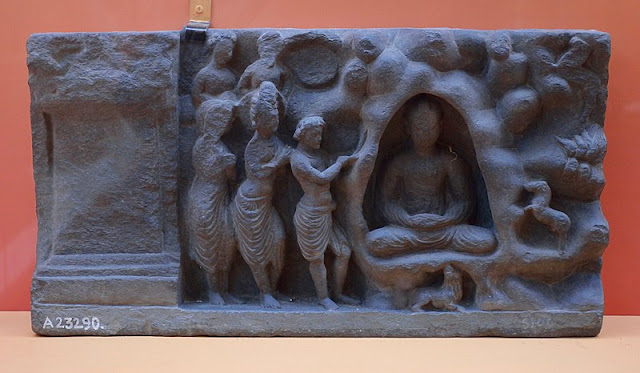Indasala Cave

image source Indasala Cave or Indrasala Cave in Bihar is identified with a cave set at the base of a cliff of sheer rocks in the Giriyek Mountain in the midst of a serene and tranquil landscape. Located to the east of Rajgir, Indasala Cave is a famed Buddhist site where the Buddha is said to have delivered one of his most thought provoking sermons recorded in the Sakkapanha Sutta. According to the Buddhist accounts, Sakka, an inquisitive person who was searching answers for his questions, came to the cave where the Buddha stayed for some time and asked his forty-two questions which were fittingly answered by the Buddha. It was during his stay at Indasala Cave that the Buddha uttered verses 206, 207 and 208 of the beautiful Pali text, Dhammapada (Verses on the Virtues). Added to this, the Indasala Cave also played host to Buddhasrijnana, the famous commentator on the Guhyasamaja Tantra. Another prime attraction of the area is the Hansa Stupa, located on the top of the Giriyak Mou





.jpg)